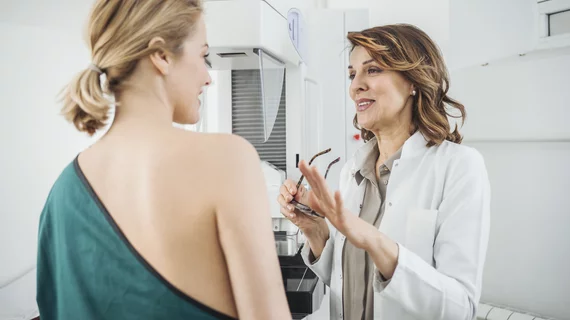Preventative, elective care plummet nationwide amid pandemic, including drops in mammography, MRI
The use of preventative and elective care services—including MRI and mammography—plummeted nationwide during the first two months of the pandemic, according to a new study released Thursday.
Americans’ telehealth use skyrocketed during March and April, but it only replaced about 40% of the decline in medical office visits. That included a roughly 67% drop in mammograms among women ages 46-64 compared to the same time last year, and a 45% dip in MRI, RAND Corp. researchers reported.
The JAMA Network Open study is one of the first to quantify cuts in elective care, the authors claim, using data representing nearly 7 million commercially insured individuals in all 50 states.
“This adds detailed evidence to the anecdotal reports that Americans quit going to see the doctor when the pandemic shutdown started,” lead author Christopher Whaley, a policy researcher at RAND, said in a statement. “If important visits are only delayed for a few months, there will likely be no harm. But if patients do not get important screenings, there could be long-term negative health consequences.”
For their analysis, Whaley and colleagues utilized insurance claims from some 200 employers, gathered between 2018 and 2020. They targeted 10 preventative and elective services for the study that also included everything from cataract surgeries to angioplasty procedures. Imaging certainly wasn’t alone in its slowdown, with vaccinations among children under age 2 dropping 22% year over year, blood sugar tests down 50%, and colonoscopies at a 70% decrease.
On the bright side, telemedicine visits leapt by more than 4,000% in April 2020 compared to the same month last year. However, Whaley et al. also noted that those who resided in low-income, nonwhite ZIP codes saw an increase in virtual care use that was about one-third lower that others living in the wealthiest of neighborhoods.
“The extent to which access barriers to telemedicine contribute to lower rates of in-person care deferral, and thus increases in potential exposure to COVID-19, should be examined in future work,” Whaley said in the statement.
You can read the rest of the analysis in JAMA here. Other study authors included representatives from Castlight Health, the National Bureau for Economic Research, and the Center Primary Care Outcomes and Research.

